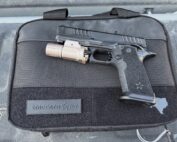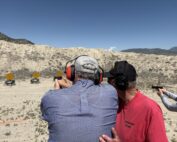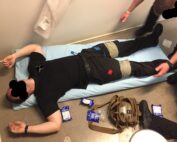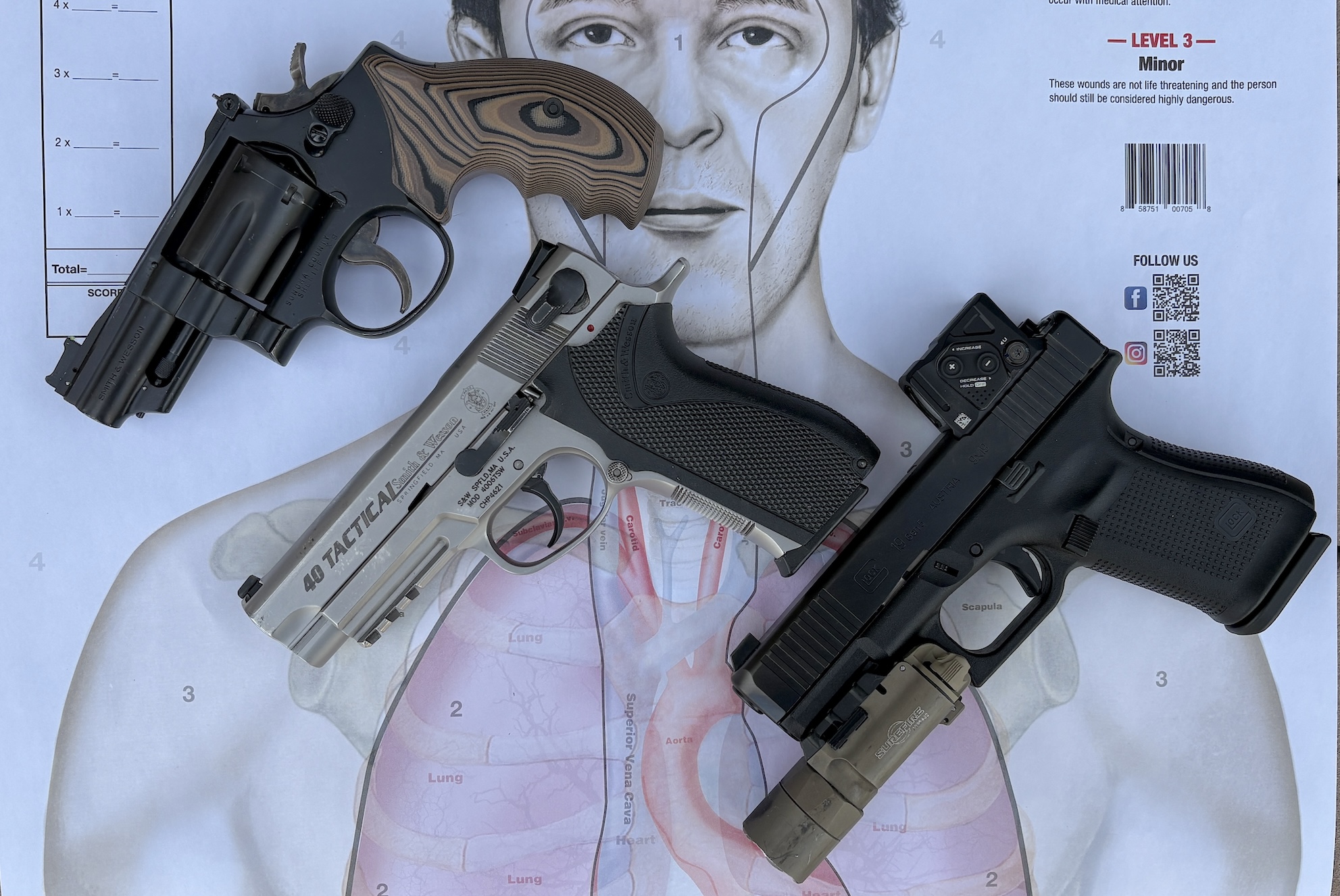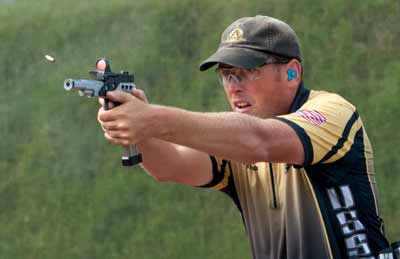
BETTER-6
The online edition of American Handgunner (www.americanhandgunner.com) had a reader question in response to an earlier column on tips for fast and accurate shooting. I posted an answer online but felt the topic important enough to address in a column.
“The latest Better Shooting column talks about the importance on not blinking. Easier said than done! Can you recommend any specific drills to correct the blinking? Thanks” — Dick Hussey
Blinking is the mildest form of flinching. Almost every shooter blinks occasionally. I have a lot of photos and videos from major practical shooting competitions and have seen examples of even world champion-level shooters blinking, though certainly not often. I believe the great majority of shooters blink most of the time. Often it’s such an ingrained habit they blink at every shot, and when firing a fast string of shots, blink in perfect synchronization with the shots. The blink is so fast the shooter is unaware of it.
Blinking can be hard to detect because it doesn’t really reduce accuracy. We’ve all seen and likely experienced the results of a flinch, when the shooter involuntarily moves the gun in anticipation of muzzle blast and recoil. Sometimes the result is an otherwise inexplicable shot far out of the group, or even completely off target.
A real all-out, no holds barred flinch can be a wondrous thing to behold. A range where I used to shoot had free “sight-in” days every fall to encourage once-a-year hunters to check their rifles. I’ve seen flinches so bad the bullet digs up turf halfway to the target. By comparison, if you can shoot at all, blinking won’t hurt your accuracy.
Then why worry about it? Because blinking makes further improvement difficult, if not impossible. If you don’t see what the sight picture looked like as the shot broke, you’ll never be able to recognize an acceptable sight picture for the shot required. Certainly unless you can see the sights lift in recoil as the shot breaks, then track back on target, you’ll never reach your potential to shoot both fast and accurately.
See The Flame?
The first step is to determine your propensity to blink, whether it’s rarely, occasionally, often or all the time. The best way is with a video camera on a tripod downrange, focused on the shooter’s eyes. Record at least 40 to 50 shots. The shooter should be aiming at a target, not just shooting randomly, and striving to shoot as accurately as possible. If you don’t blink at all with a light-recoiling handgun such as a .22 rimfire, work your way up to the heaviest centerfire you shoot. If you can fire 40 to 50 shots with a short-barreled .357 Mag. revolver or a .44 Magnum without blinking, you have nothing more to learn about that.
Actually you can find out if you blink right now without even putting down this magazine. Just answer this question: When you shoot your handgun, do you see the flame? It might be easy to miss the flame of standard-velocity .22 rimfires, but with any centefire the flame is readily visible. Not just on a darkened indoor range either, you should see it when shooting outdoors in daylight. If you aren’t seeing the flame — you’re blinking.
Unconsciously Skilled
Fixing a blinking habit is just like fixing a flinch. Both are subconscious habits. They are fixed by replacing a bad habit with a good habit. Since both are an involuntary reaction to muzzle blast and sudden movement (recoil and slide cycling), the way to develop good habits is to eliminate the cause.
I’m speaking, of course, of regular, disciplined dry-fire. I realize I’m kind of a broken record on this topic, but dry fire is so important. It isn’t just about saving money on ammunition. Every good shooter I know uses dry-fire as part of their training.
Doug Koenig is the best all-around shooter I’ve ever met. Based on his record at very different types of competition (IPSC World Champion, Masters Champion, Bianchi Cup champion multiple times), I’d argue Doug is the best all-around shooter ever. I once asked Doug about dry-firing. Paraphrasing from memory, he said dry-firing is an essential training tool, one no shooter ever stops benefitting from. Learning to press the trigger is one of the benefits. Another is building overall good shooting habits.
Chronic blinkers will likely be surprised to find they blink at first even when dry-firing. Focus on the front sight and consciously keep the eyes open while dry-firing to learn a new habit. How often? Ten-minute sessions three times a week won’t make you a world champion, but keep it up faithfully and you’ll see positive results.
The old wisdom holds true: unconsciously unskilled — consciously unskilled — consciously skilled — unconsciously skilled.


 (-2 rating, 2 votes)
(-2 rating, 2 votes)